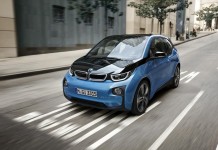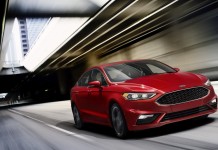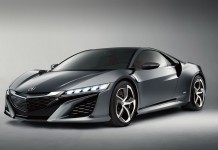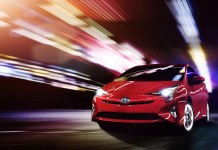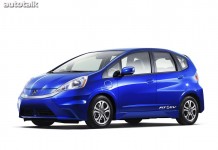It would appear that as of late, electric vehicles are stealing the automotive industry’s spotlight. They may be zero emissions, but the electic car’s biggest downfall is its driving range. Never truly realistic, especially in urban sprawl America, an electic car can only travel no more than 100 miles on a full charge. Volvo Car Corporation plans to change this by developing range extenders that are more traditional than one might think.
“This is an exciting expansion of our increasing focus on electrification. Battery cost and size mean that all-electric cars still have a relatively limited operating range. With the Range Extender, the electric car has its effective range increased by a thousand kilometres – yet with carbon dioxide emissions below or way below 50 g/km,” says Derek Crabb, Vice President Powertrain Engineering at Volvo. These ‘Range Extenders’ are, simply put, combustion engines.
Volvo is currently testing three combinations of engine and electric motor. All three include a very compact three cylinder gasoline engine that can run on either E85 ethanol or petrol. Two of the concepts use the C30 Electric as their base: one with a series-connected extender (i.e. a locomotive) and one with a parallel-series extender (more like a traditional gas/electric hybrid). The third concept is based on the V60 and uses a parallel-series extender.
What’s exciting is the C30 with the series-connected extender, which allows the combustion engine to operate like a generator with the primary goal of powering the electric motor, which is very similar to how a train locomotive operates. This combination produces a total of 300 horsepower, allow the car to hit 62 mph in less than six seconds, and increases the electic car’s driving range by 1,000 kilometers.
Read Volvo’s full press release below.
——————————————————————————————————————————-
Volvo Car Corporation is now taking the next step in the company’s electrification strategy by producing test cars with Range Extenders – electric cars that are fitted with a combustion engine to increase their effective range.
The projects, supported by the Swedish Energy Agency and the EU, encompass three potential technology combinations. Tests of the various concepts will get under way in the first quarter of 2012.
“This is an exciting expansion of our increasing focus on electrification. Battery cost and size mean that all-electric cars still have a relatively limited operating range. With the Range Extender, the electric car has its effective range increased by a thousand kilometres – yet with carbon dioxide emissions below or way below 50 g/km,” says Derek Crabb, Vice President Powertrain Engineering at the Volvo Car Corporation.
The company’s technological developments in this area currently encompass three different technology combinations, with three-cylinder petrol engines being installed to complement electric drive to the front wheels. All the variants feature brake energy regeneration. The engines can run on both petrol and ethanol (E85).
Two of the solutions are based on the Volvo C30 Electric. In both cases, the standard battery pack has been somewhat reduced in size to make room for the combustion engine and its fuel tank.
Technical concept I: Volvo C30 with series-connected Range Extender
This is based on a C30 Electric with a three-cylinder combustion engine producing 60 horsepower (45 kW) installed under the rear load compartment floor. The car also has a 40 litre fuel tank.
The combustion engine is connected to a 40 kW generator. The power it generates is used primarily to drive the car’s 111 horsepower (82 kW) electric motor, but the driver can also choose to let the generator charge the battery, thus increasing the car’s operating range on electricity.
The Range Extender increases the electric car’s range by up to 1,000 km – on top of the 110 km range provided by the car’s battery pack.
Technical concept II: Volvo C30 with parallel-connected Range Extender
Here the car gets a more powerful three-cylinder combustion engine at the rear and a 40 litre fuel tank. The difference between this and the first solution is the parallel connection, whereby the turbocharged 190 horsepower engine primarily drives the rear wheels via a six-speed automatic transmission. This gives a better fuel efficiency rating when driving with the combustion engine cruising on the highway. Via a 40kW generator the battery can also be charged to give the car increased range on electricity alone.
Here too the electric motor is a 111 hp (82 kW) unit. The two power sources give the car more than 300 hp in total, and acceleration from 0-100 km/h of less than six seconds.
The Range Extender increases the electric car’s range by more than 1,000 km – in addition to the range of up to 75 km provided by the car’s battery pack.
Technical concept III: Volvo V60 with parallel-connected Range Extender
This is a solution whereby the entire drive package is installed under the bonnet at the front. The 111 hp (80 kW) electric motor is supplemented with a three-cylinder petrol turbo engine producing 190 hp (140 kW), a two-stage automatic transmission and a 40 kW generator. Power from the combustion engine drives the front wheels via the gearbox and recharges the battery pack whenever needed.
Up to 50 km/h, the car is always powered solely by electricity. The combustion engine is activated at higher speeds. What is more, it charges the battery pack when its charge drops below a predetermined level.
The battery pack is located under the rear load floor and it gives the driver a range of 50 km on electricity alone. The car also has a 45 litre tank for petrol or E85.
With this technology, the Range Extender increases the car’s total range by more than 1,000 kilometres.
CO2-lean driving pleasure and comfort
The series-hybrid Range Extender in the C30 is part of an EU project in which the Volvo Car Corporation is the only car manufacturer among eight partners. The company’s two parallel-hybrid Range Extender solutions are being developed with a grant of SEK 10.8 million (EUR 1.2 million) from the Swedish Energy Agency.
“These three projects allow us to evaluate the Range Extender’s various possibilities. As with the C30 Electric and V60 Plug-in Hybrid, the goal is to make the cars exceptionally CO2-lean without compromising on customer requirements such as comfort, driving pleasure and practicality,” explains Derek Crabb.



